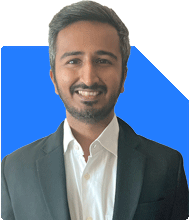Is it possible to withdraw Rs 25,000 per month with an investment of Rs 10-12 lakh for my 60-year-old mother?

I am Sankalp. I am looking to do a Systematic Withdrawal Plan for my mother, who is 60 now. I am targeting a monthly withdrawal of Rs 10,000. The lump sum amount intending to invest is Rs 10-12 lakh. Is this possible with this amount to withdraw an amount of of Rs 25,000 per month? Which type of MFs are good for doing SWP? Is it wise to do SWP in equity oriented funds? Also is it good to do SWP in two mutual funds with the above Rs 10-12 lakh?
Suitable Mutual Funds for SWP:
• Hybrid Funds (Balanced Funds): These funds invest in both equities and debt, balancing growth potential with lower volatility. They are suitable for moderate risk and could provide a steady income.
• Debt Funds: These funds are less volatile and offer more predictable returns, making them good for stable withdrawals, though the growth potential is lower compared to equities.
• Conservative Hybrid Funds: These funds have a higher allocation to debt and a smaller portion in equity, making them more conservative but still offering some growth.
SWP in Equity-Oriented Funds:
Equity funds can offer higher returns over the long term, but they are volatile. SWP from equity-oriented funds could result in selling units at a loss during market downturns, which may not be ideal for generating steady income. For your mother, who is 60, a balance between equity and debt could be more suitable to manage risk.
Splitting the Investment:
Investing in two different funds for SWP is a good strategy for diversification. You could allocate one part to a hybrid or balanced fund for moderate growth and another to a debt fund for stability.
Recommendation:
Consider starting the SWP from a hybrid or balanced fund for moderate risk and some exposure to growth. Add a conservative debt fund for stability.
If you’re targeting Rs 10,000 per month, an investment of Rs 10-12 lakh should work well with lower withdrawal rates of around 6-8 per cent. For Rs 25,000 per month, you may need a higher investment or explore other income-generating assets alongside SWP.
Here are some specific mutual fund categories and examples that could suit your SWP strategy, considering your goal of stable withdrawals for your mother:
1. Hybrid Funds (Balanced Advantage Funds):
These funds automatically adjust their equity and debt exposure based on market conditions, providing a mix of growth and stability.
Examples:
• ICICI Prudential Balanced Advantage Fund
• HDFC Balanced Advantage Fund
These funds are suitable for moderate risk, with potential for long-term growth while providing a stable income.
2. Conservative Hybrid Funds:
These funds have a higher allocation to debt and a smaller portion in equity, making them more conservative. They offer lower volatility and steady income.
Examples:
• ICICI Prudential Equity & Debt Fund
• HDFC Hybrid Debt Fund
These funds are suitable for low-risk investors who still want some equity exposure for growth potential.
3. Debt Funds (Short-Term or Corporate Bond Funds):
Debt funds provide stable returns with low risk, which is ideal for conservative investors. They are more predictable but offer lower returns compared to equity.
Examples:
• SBI Magnum Medium Duration Fund
• HDFC Corporate Bond Fund
These funds are good for regular income generation while maintaining capital preservation.
Suggested Allocation:
• 50 per cent in a Balanced/Hybrid Fund: This will provide moderate growth with some equity exposure.
• 50 per cent in a Debt Fund: This will stabilise the income and protect against market volatility.
By splitting the Rs 10-12 lakh investment between these two types of funds, you could balance risk and growth potential while generating a steady income through SWP.
You may like to see similar questions and answers below
Ulhas Joshi |280 Answers |Ask -Follow
Mutual Fund Expert - Answered on Aug 19, 2023
Ramalingam Kalirajan |10870 Answers |Ask -Follow
Mutual Funds, Financial Planning Expert - Answered on May 12, 2024
Vivek Lala |323 Answers |Ask -Follow
Tax, MF Expert - Answered on Jul 09, 2024
Ramalingam Kalirajan |10870 Answers |Ask -Follow
Mutual Funds, Financial Planning Expert - Answered on Sep 04, 2024
Ramalingam Kalirajan |10870 Answers |Ask -Follow
Mutual Funds, Financial Planning Expert - Answered on Feb 04, 2025
Dr Dipankar Dutta |1836 Answers |Ask -Follow
Tech Careers and Skill Development Expert - Answered on Dec 05, 2025
Ulhas Joshi |280 Answers |Ask -Follow
Mutual Fund Expert - Answered on Dec 05, 2025
Dr Dipankar Dutta |1836 Answers |Ask -Follow
Tech Careers and Skill Development Expert - Answered on Dec 04, 2025
Ravi Mittal |676 Answers |Ask -Follow
Dating, Relationships Expert - Answered on Dec 04, 2025
Anu Krishna |1745 Answers |Ask -Follow
Relationships Expert, Mind Coach - Answered on Dec 04, 2025
Anu Krishna |1745 Answers |Ask -Follow
Relationships Expert, Mind Coach - Answered on Dec 04, 2025
Mayank Chandel |2562 Answers |Ask -Follow
IIT-JEE, NEET-UG, SAT, CLAT, CA, CS Exam Expert - Answered on Dec 04, 2025
Mayank Chandel |2562 Answers |Ask -Follow
IIT-JEE, NEET-UG, SAT, CLAT, CA, CS Exam Expert - Answered on Dec 04, 2025
Mayank Chandel |2562 Answers |Ask -Follow
IIT-JEE, NEET-UG, SAT, CLAT, CA, CS Exam Expert - Answered on Dec 04, 2025
Mayank Chandel |2562 Answers |Ask -Follow
IIT-JEE, NEET-UG, SAT, CLAT, CA, CS Exam Expert - Answered on Dec 04, 2025


























